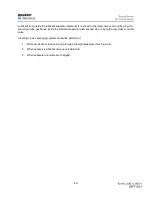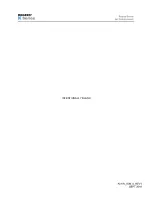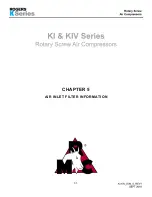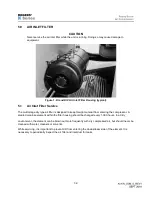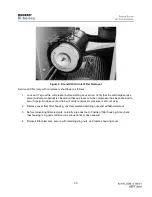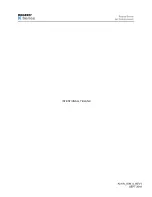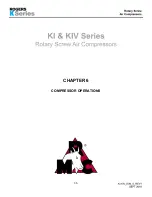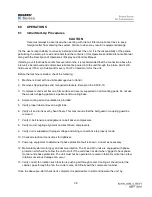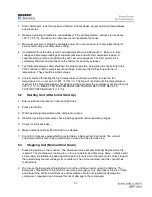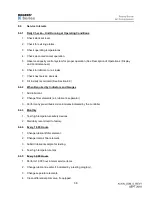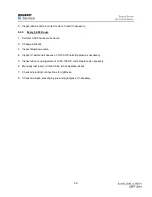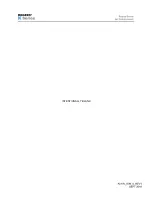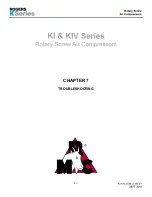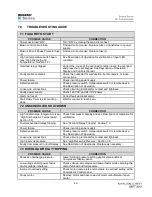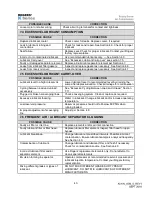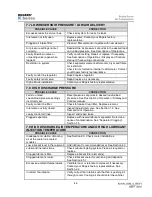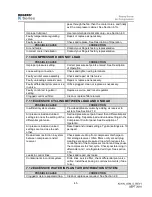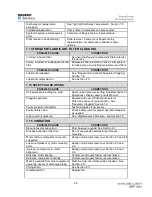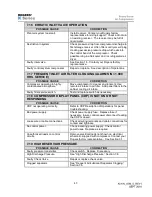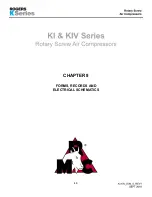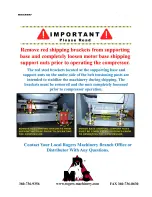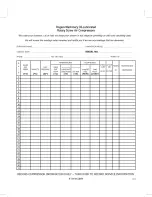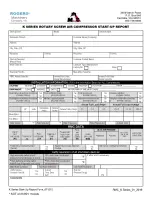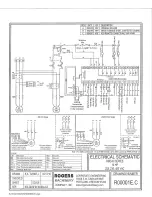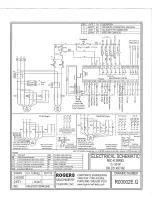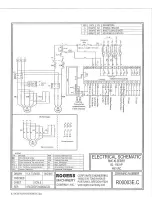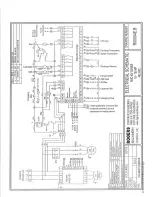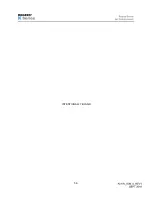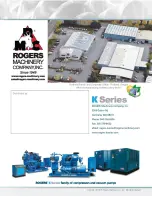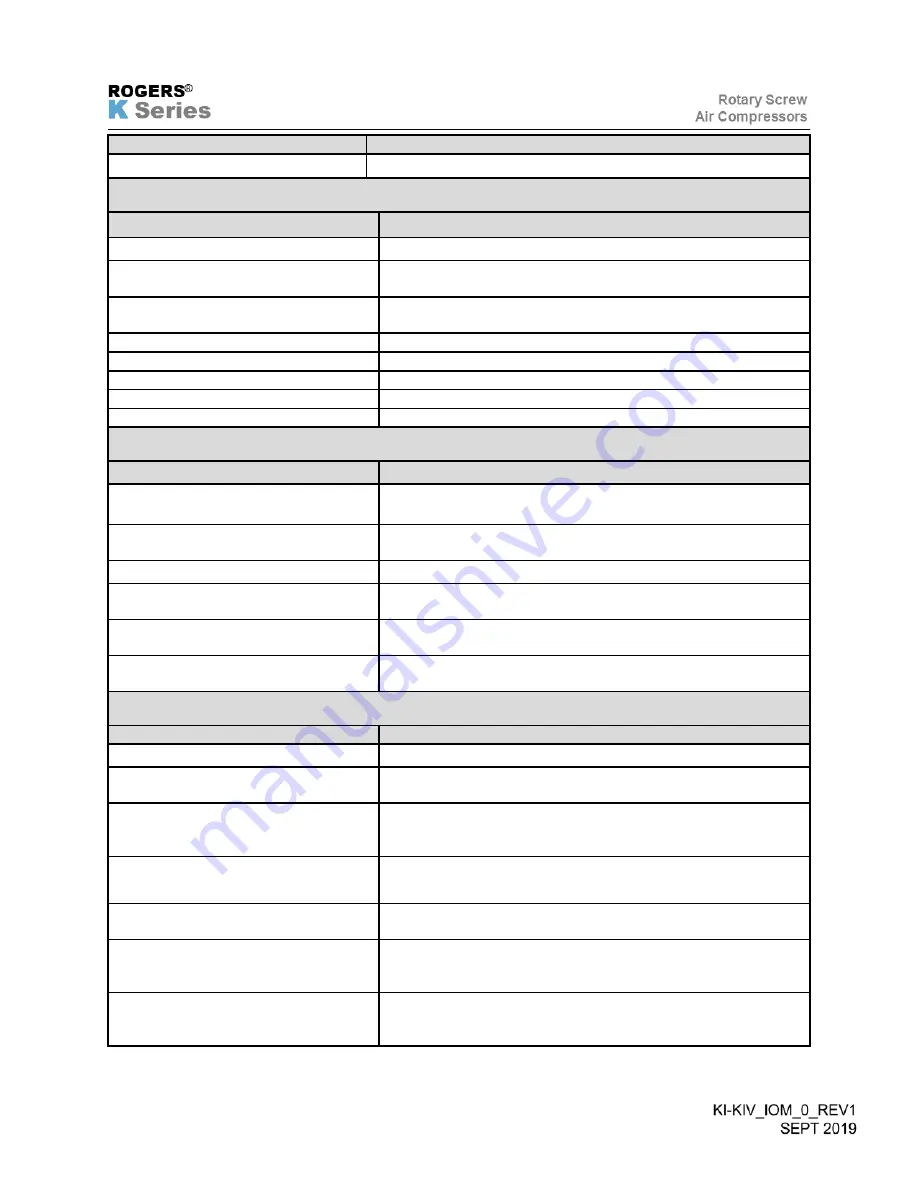
43.
POSSIBLE CAUSE
CORRECTION
Loose motor or starter wiring.
Check all wiring terminals for contact and tightness.
7.4 EXCESSIVE LUBRICANT CONSUMPTION
POSSIBLE CAUSE
CORRECTION
Ruptured lubricant cooler.
Check cooler for leaks. Replace cooler, if required.
Leak in lubricant tubing and
connections.
Check for leaks and repair. See Section 4.0. Check for proper
lubricant.
Seal failure.
Replace seal. Check for proper lubricant. Contact your Rogers
factory representative.
Incorrect or contaminated lubricant.
Use recommended lubricants only. — See Section 4.0
Lubricant Carry-over
See “Excessive Lubricant Carry-over” see section 7.5.
Faulty or damaged separator element. Replace air/lubricant separator element per Section 4.7.
Leaks from lubricant filter gaskets.
Inspect and replace gasket as necessary. See Section 4.6.
Leaks from reservoir cover.
Inspect and replace gasket as necessary. See Section 4.7
7.5 EXCESSIVE LUBRICANT CARRY-OVER
POSSIBLE CAUSE
CORRECTION
Lubricant level too high in reservoir.
Lower lubricant level to recommended level by draining the
sump after depressurization. Check drainage for condensation.
Cycling between load and unload
excessively.
See “Excessive Cycling Between Load and Unload”, Section
7.11.
Plugged or broken scavenging lines.
Check scavenging system. Clean or replace as required.
Excessive lubricant foaming.
Water in lubricant. Change lubricant and/or increase operating
temperature.
Low reservoir pressure.
Reservoir pressure should not fall below 80 PSIG when
running loaded.
Improper adjustment of scavenging
line.
Adjust per Section 4.8
7.6 FREQUENT AIR / LUBRICANT SEPARATOR CLOGGING
POSSIBLE CAUSE
CORRECTION
Faulty air filter or inlet line.
Replace elements and/or air inlet connection.
Faulty lubricant filter or filter head.
Replace lubricant filter element. Inspect filter head for open
bypass.
Lubricant breakdown.
Change lubricant at prescribed intervals. Possible lubricant
contamination. Ensure lubricant sample is analyzed frequently.
See Section 4.0.
Contamination of lubricant.
Change lubricant and lubricant filter, and flush if necessary.
Check for contamination source. See Section 4.0.
Incorrect lubricant filter and/or
separator element.
Use Rogers’ replacement elements only. Do not attempt to
clean separator elements.
Emulsion forming in separator.
Operate compressor at recommended reservoir pressure and
lubricant injection temperature. Contact your Rogers factory
representative.
Mixing different grades or types of
lubricant.
DO NOT MIX DIFFERENT GRADES OR TYPES OF
LUBRICANT. DO NOT MIX LUBRICANTS OF DIFFERENT
MANUFACTURERS.
Содержание KI Series
Страница 1: ...1 Model __________________ Serial __________________ Rotary Screw Air Compressors...
Страница 8: ...7 INTENTIONALLY BLANK...
Страница 9: ...8 CHAPTER 1 GENERAL INFORMATION...
Страница 19: ...10 CHAPTER 2 INSTALLATION INSTRUCTIONS...
Страница 26: ...17 CHAPTER 3 ELECTRICAL INFORMATION...
Страница 30: ...21 CHAPTER 4 COMPRESSOR LUBRICANT...
Страница 39: ...30 INTENTIONALLY BLANK...
Страница 40: ...31 CHAPTER 5 AIR INLET FILTER INFORMATION...
Страница 43: ...34 INTENTIONALLY BLANK...
Страница 44: ...35 CHAPTER 6 COMPRESSOR OPERATIONS...
Страница 49: ...40 INTENTIONALLY BLANK...
Страница 50: ...41 CHAPTER 7 TROUBLESHOOTING...
Страница 57: ...48 CHAPTER 8 FORMS RECORDS AND ELECTRICAL SCHEMATICS...
Страница 58: ...49...
Страница 59: ...50...
Страница 60: ...51...
Страница 61: ...52...
Страница 62: ...53...
Страница 63: ...54...
Страница 64: ...55...
Страница 65: ...56 INTENTIONALLY BLANK...
Страница 66: ...57...

